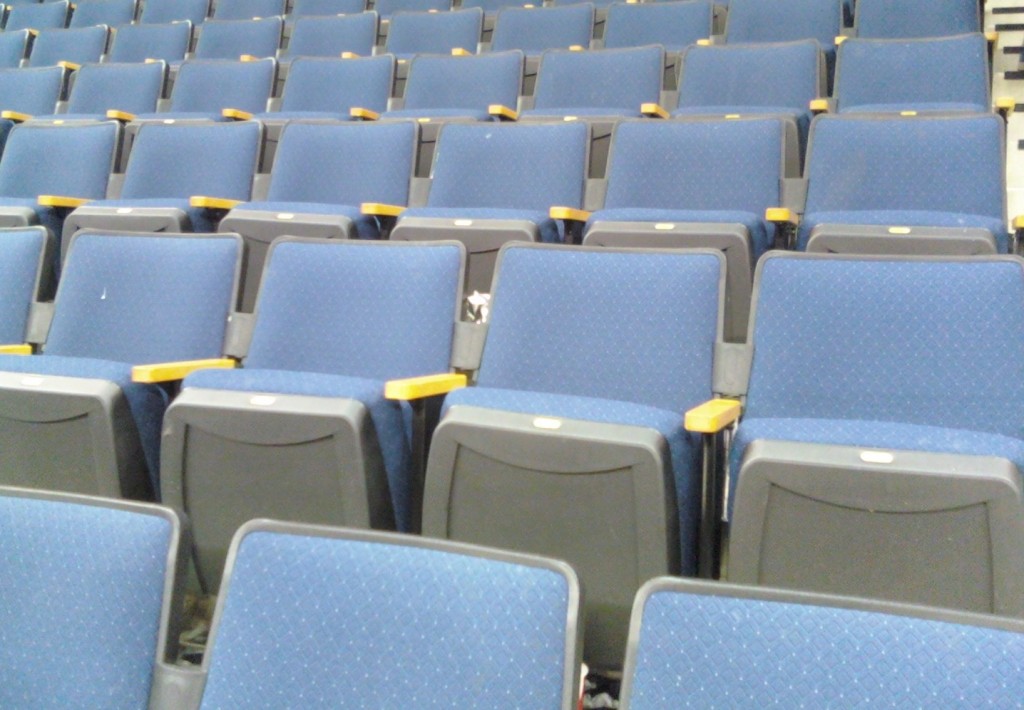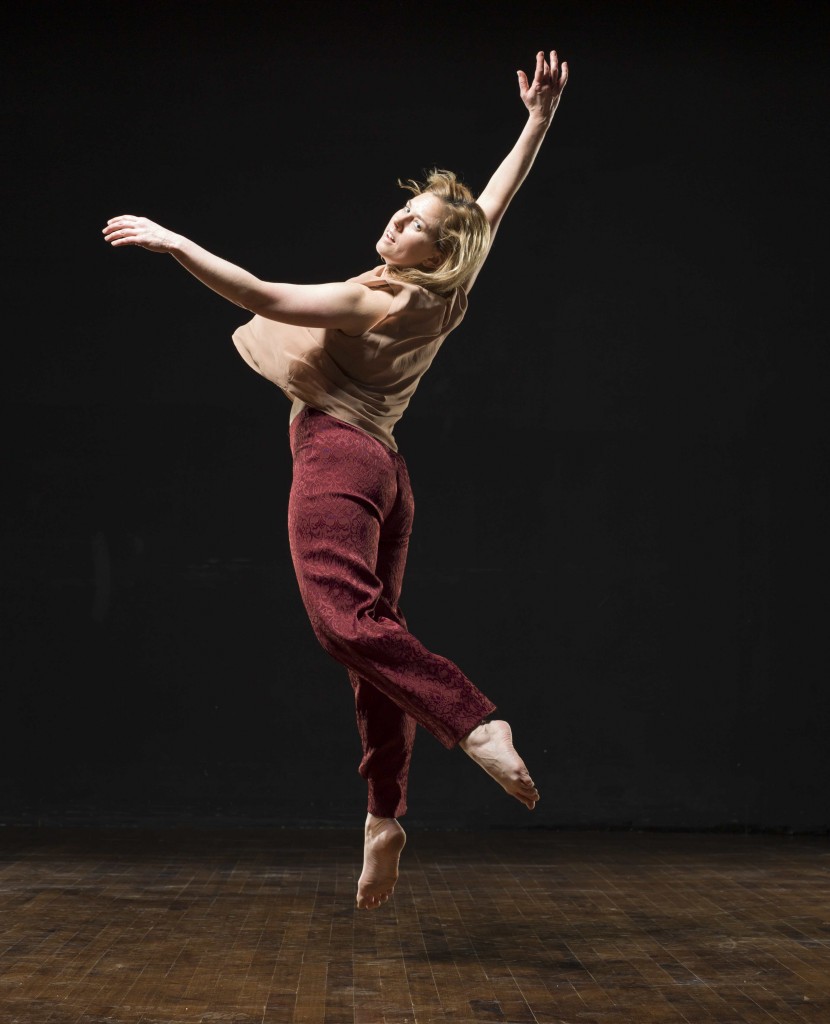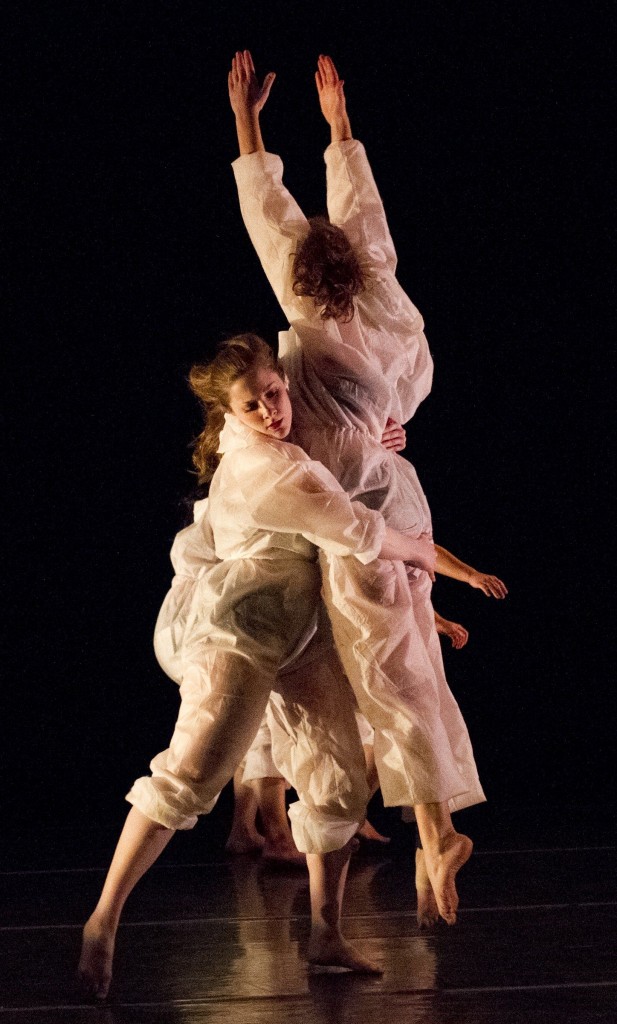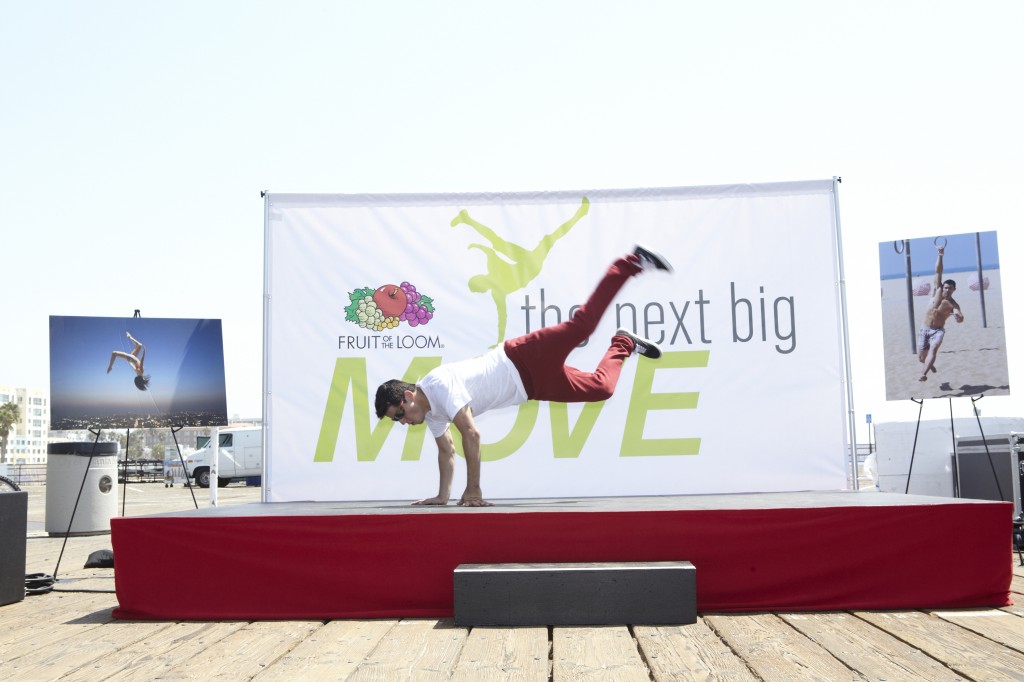by Lauren Warnecke
 It’s been awhile since I’ve been here.
It’s been awhile since I’ve been here.
When I first started contributing at 4dancers, it was a place where I could process my thoughts from a choreographic standpoint and share my views about dancemaking – as a dancemaker.
Everything was going fine, and then one day people started calling me a dance critic.
In the past year, Chicago has experienced a huge shift amongst the dance writers – a shift of which I was a very fortunate benefactor. The head of state in the world of Chicago dance criticism retired, and everyone sort of just shuffled about and moved up the ranks. The shift in my local community of writers, combined with the impending collapse of print publications, has brought dance bloggers to the forefront. Bloggers are now participating in dance criticism on a pretty significant level.
This is a shift that makes lots of people uncomfortable (journalists and dancers alike). There is an old-school model of arts criticism that requires the critic to be from outside the community in order to remain objective. Bloggers are often working artists themselves, and may, at times, appear to simply be advertising for themselves and their friends. The problem with this way of thinking is: without bloggers, there are only a handful of writers left. The old-school infrastructure is caving in, and can’t support the writers. One-time dance critics have now opted for jobs in PR, marketing, and consulting within the dance community because it’s impossible to make a living as a critic alone. To deny that bloggers don’t carry weight in today’s press is not just narrow-minded – it threatens dance criticism as a whole. In a city such as Chicago with dozens and dozens of dance companies, the odds of getting press from one of the four or so writers left are pretty slim. Enlarge the concept of what a critic is, and you enlarge the possibility for press.
Personally, I never considered myself a dance critic, and it’s a title I’m still not entirely comfortable with. At my core, I’m one of you. I’m part of the community. I just express my voice through a different medium now.
As a dancemaker I used to wonder what the critics were looking for. Artists pour their hearts into everything they do, and expose an enormous amount of vulnerability onstage. For a stranger to come in and, in 500 words, say that you sucked… well… that doesn’t feel good. A bad review might lead to you think you need to change your dance, or change your process, or quit altogether. A bad review makes you not want to enter the theater the next day and do your show again. A bad review feels intensely personal, and what’s worse is that you know it’s not personal to the reviewer. A bad review can (occasionally) affect what other people think, because a dance critic is a trusted source who is supposed to understand dance better than most people.
All of that is true, except the part about you quitting altogether. I know it is, because I’ve been there. I’ve been the subject of some not-so-awesome comments, and know what that feels like. I’ve had to remind myself that this is just the opinion of one person, who isn’t nearly as invested in the work as I am – that there are very few right and wrong answers in dance.
Guess what? I carry those feelings with me every time I sit down to my keyboard. That’s not to say that I think every review should be glowing. Just like dance, a review comes from a place of vulnerability and authenticity. Telling the truth is the hardest part of the job, because I know exactly how hard each choreographer works to develop a piece. But it is pointless to give blanket praise to everything, or to say things I don’t don’t mean or don’t feel because I’m afraid people will be mad or hurt.
Above all else, criticism is about discourse. By its nature, the job exposes the critic to lots and lots (and lots) of dance. While you’ve been working really hard on your own thing, we are out watching everybody else’s thing. So the leg up is not that a critic can kick as high as you can, or make a dance that is better than yours. The cred comes from the fact that we’ve just seen more, and have a broader base of comparison than most people. The longer you do it, the bigger the inventory to draw from. None of this answers the question on the day, which is: what the heck are dance critics looking for?!?
Easily asked, and not as easily answered. I can only speak for myself here, but the next little bit of this manifesto is devoted to telling you, the choreographer, what I look for in a successful dance performance.
In a word: everything.
I consider the dance and the dancers. Are the dancers dancing strongly? Are they in unison when they are supposed to be? Are they pushed outside their comfort zone? Are the better or worse than previous appearances? Is your dance choreographically sound? Does it have a beginning, a middle, and an end? Is there a through-line, or any sort of “letting in” to your audience? Is it new, or innovative, or somehow different from everything else? What sort of adjectives does your dance evoke?
I consider the performance experience. Is this dance appropriate for this venue? Is it a good weekend for this concert? Is your concert worth the ticket price, or the bad parking situation, or the lumpy, uncomfortable chair I’m sitting in? Who is your audience? What does their response appear to be?
I consider collaboration. How are elements of lighting, sound, costume, set, etc. used to enhance (or, in some cases detract from) the performance? Is anything new or different or innovative about these collaborations?
At the end of the day, it comes down to my gut. How do I feel after leaving this performance? Was it awesome? Thought-provoking? Uncomfortable? Memorable? How does this performance stack up to others I’ve seen recently? If I know the choreographer or the company, was this a good effort from them, this time?
Maybe hearing what goes through my head at a dance performance informs your process, and maybe it doesn’t. Your art is your art, and plenty of people have created successful careers while being consistently reviled by the critics. It’s up to you to decide whether or not it really matters.
Love us or hate us, we need each other. We depend on one another, particularly in the live arts, to continue to push, question, and provoke new things from an art form that creates only fleeting moments. After disclosing what I’m looking for from you, the question is: what are you looking for from me?

Contributor Lauren Warnecke is a Chicago-based dance writer. She holds degrees in Dance (BA, ’03) and Kinesiology (MS, ’09) and is currently on faculty for the Department of Kinesiology and Nutrition at the University of Illinois-Chicago.
In 2009 Lauren created Art Intercepts, a blog focused on dancer health, education, and editorial criticism. She is a regular contributor to SeeChicagoDance, Windy City Times, and the Huffington Post, with occasional contributions to Dance Advantage, 4dancers, and The L Stop.
Lauren has freelanced as a production/stage manager, curator, choreographer, and grant writer. She is a Certified Personal Trainer (ACSM) and Functional Training Specialist (ACE). She enjoys coffee and vintage apparel, and believes in the Oxford comma. Follow Lauren on Twitter @artintercepts.











